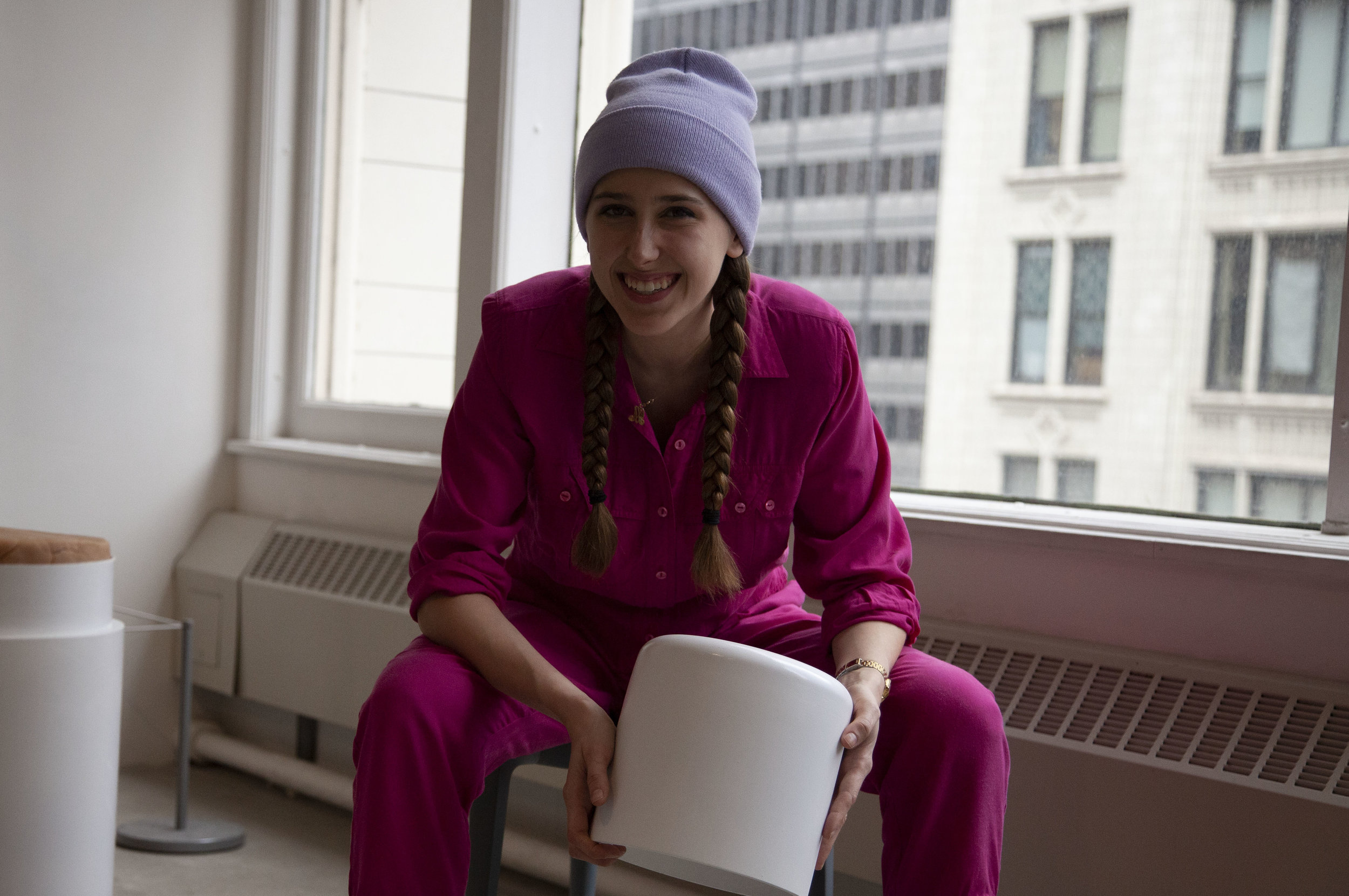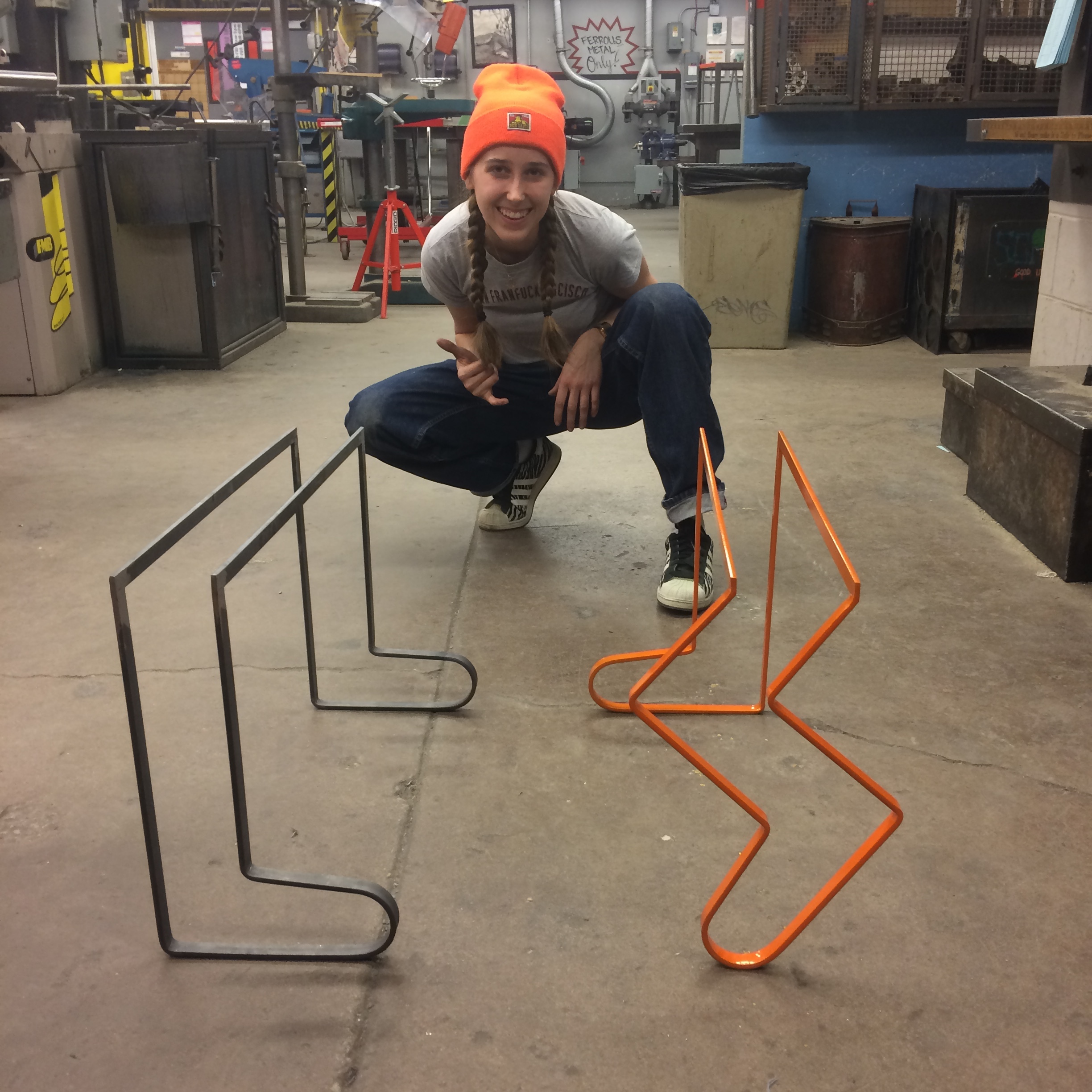Majenta Strongheart is an emerging designer from San Francisco, California, working at the intersection of design, social innovation, science, and fine arts. She is interested in socially positive design, research, and collaboration; focusing on the ways design thinking and problem solving can contribute to a diverse range of conversations including issues of sustainability when it comes to materials and processes for manufacturing. Through her work Majenta aims to spark curiosity, provide access to new topics, and encourage interaction.
Majenta thrives to be a positive contributing member to her community, she is always looking for ways to be involved with local initiatives that make design and fabrication more accessible to femme and nonbinary people and people of color. She has had work featured at the De Young Museum in San Francisco and Spazio Rossana Orlandi in Milan, and has organized over one hundred exhibits and events to facilitate connection, education, and inspiration.
Majenta on the left helping lead an aluminum pour.
ARTIST STATEMENT
I primarily work with traditional and digital fabrication processes to produce pieces that create moments or environments for exploration. My work often plays with the tension between functional designed objects and more ambiguous sculptural, performative, or installation-based work. Silhouettes are a major component of most of my sculptures because of their ability to quickly trigger associations. Just a simple silhouette of an everyday object, for example a common household product, can activate a memory; and the cues that are activated will vary from generation to generation, culture to culture, and person to person. Other times my work is less about extracting and manipulating a silhouette, and more about reframing a familiar object, or playing with the relationship between language and object.
By working with a diverse range of materials, processes, and scales, I create curious spaces and objects that may trigger a range of associations. Through technical training I have been able to develop a library of traditional and nontraditional forms of making that I can pull from to produce my pieces, these include but are not limited to; metalworking processes, woodworking processes, CNC plasma cutting, CNC milling, laser cutting, and 3D printing. (Computer Numerical Controlled machines translate digital 3D models into cut paths for milling or cutting on two or three axes). I really enjoy labor intensive processes that allow me to get lost in the making such as the steam bending, laminated wood forming, and lost wax casting. I am constantly fueled by my curiosity and desire to learn everything I can. Traditional modes of the design process are also crucial to the development of any of my projects be they performances, installations, or designed objects; researching, prototyping, and iterating are necessary components of my projects’ development.
I have a great interest in the “in-between,” and it is this idea that most of my pieces embody. This perspective has grown from my work in sculpture, installation, and design. However, my approach comes from more than just being in between mediums or departments, it comes from the desire to latch on to the spaces of the in-between in the ways the human mind perceives things. I am often inspired by classical surrealist works, such as those by Magritte and Dalí, and their ability to make connections between similar commonly found forms. By drawing attention to these similarities in form, their works build the scaffolding for a viewer to make their own relations, should they choose to, and often leave the viewer with more questions than answers. This is precisely the kind of cognitive creativity I hope to spark with my own work. The silhouettes I draw from are derived from all kinds of preexisting forms that I’ve taken interest in due to a particular trail of research or taken note of from everyday observation. I am interested in perception and recognition: how the brain retrieves memories compiled over a lifespan and selects the appropriate ones to allow the person to realize what it is being seen, smelled, tasted… experienced. It is this process of recall that I seek to interrupt with my pieces in order to facilitate a moment of curiosity.




